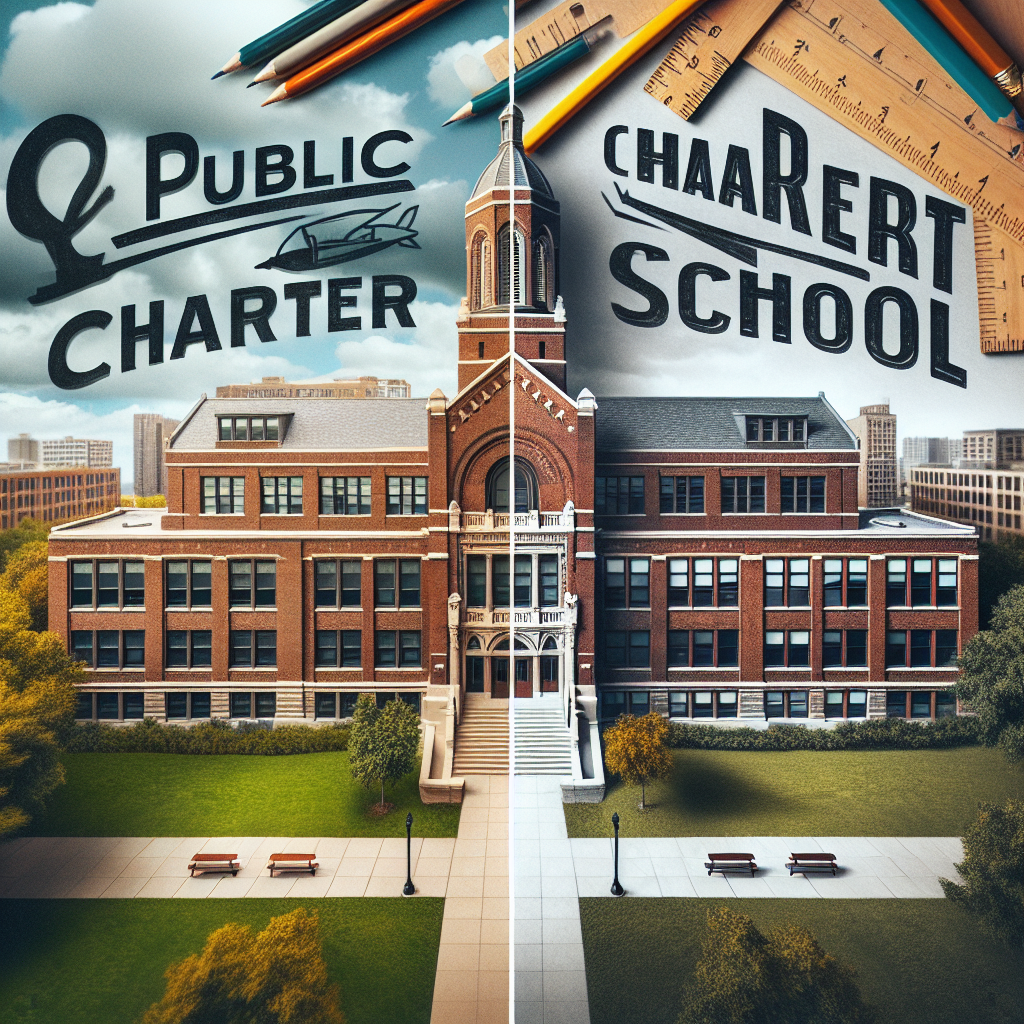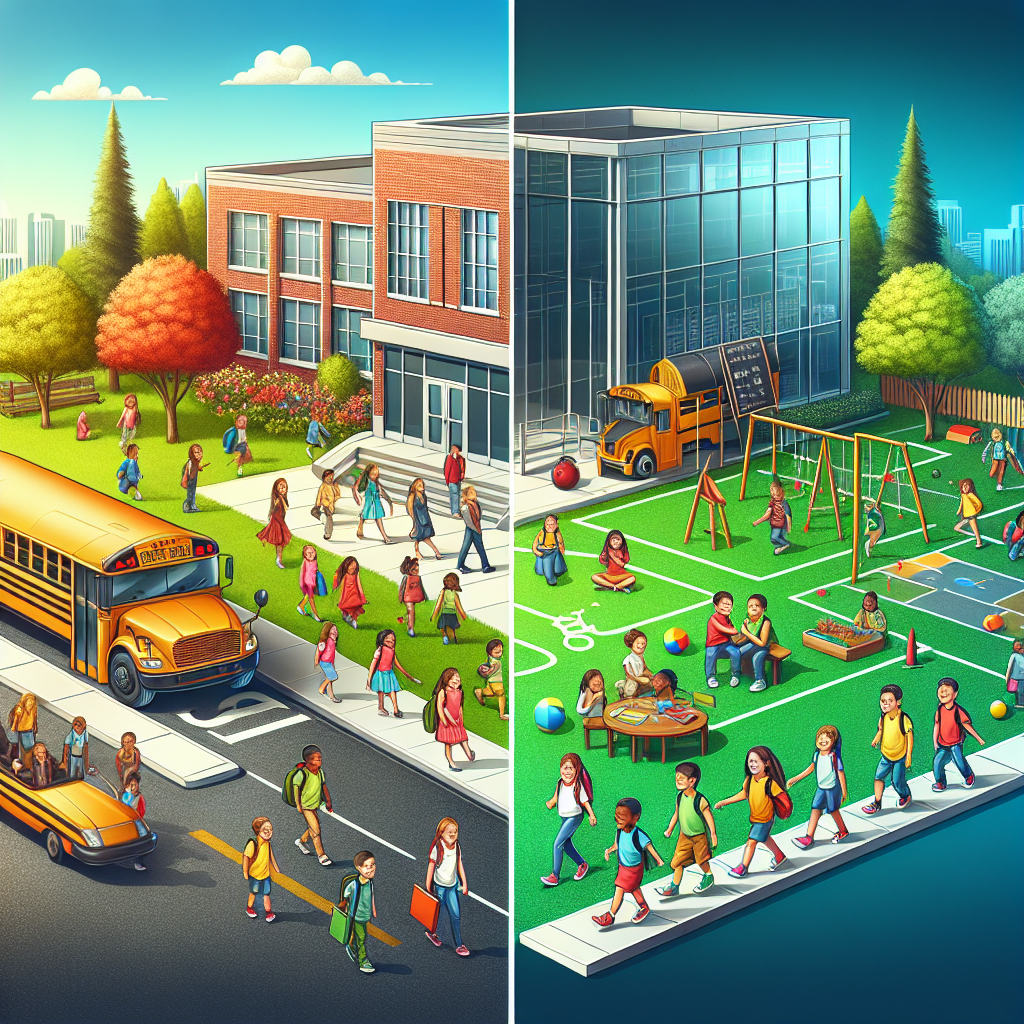Public Schools vs Charter Schools: What Parents Need to Know About School Choice
- Gabrielle Bryant, Ed.S

- May 16
- 5 min read
Updated: 5 days ago
Education is the key to a brighter future, a path that every individual embarks on at a young age. In the world of education, there are two common terms that often surface but can be confusing - public versus charter. These educational institutions play a crucial role in shaping the minds of our future generations, each with its unique characteristics and approach, so let's take a closer look into the world of public and charter schools. Understanding their differences and similarities can help you navigate this crucial aspect of education seamlessly.

Unveiling the Mystery: What is a Charter School?
It's essential to know that these institutions are publicly funded based on enrollment (per-pupil funding), just like traditional public schools, but operate independently. They do not charge tuition and must be open to all students, typically via a lottery if demand exceeds available seats. Charter schools have more autonomy and flexibility in curriculum design, staffing, budgeting, scheduling, pedagogy, and other crucial decisions compared to traditional public schools in exchange for increased accountability for performance. While publicly funded, charter schools are usually run by independent organizations, such as non-profits, universities, or private companies, under a charter - a legal performance contract between the school and its authorizing agency that outlines the school’s mission and vision, academic goals, methods of assessment and measuring progress, governance and accountability structures, operational guidelines, terms of renewal, revocation, and closure. If a school fails to meet the terms of its charter—e.g., poor student performance, financial mismanagement, or legal violations—it can be shut down. This performance-based model aims to incentivize innovation and results which is one of the fascinating aspects of charter schools - the opportunity they provide for innovation and tailored approaches to education delivery based on the community’s needs and values.
With a mission to foster creativity and academic excellence, charter schools often have specialized programs or unique teaching methods that set them apart. Charter schools often have a distinct educational approach which may include STEM-focused curricula, arts integration, language immersion, project-based or experiential learning, Montessori or classical education models. This freedom to test new teaching methods, curricula, and school structures allows them to serve specific student populations or needs (e.g., underserved communities, gifted students, students with disabilities). Charter schools create competition because they are often seen as part of a "school choice" movement, providing families with more options beyond their assigned neighborhood school. The theory is that competition will push all schools—charter and traditional—to improve.
Enrolling your child in a charter school can be an exciting journey filled with diverse educational experiences that cater to individual learning styles. As of 2024, there are over 7,500 charter schools in the U.S., serving more than 3 million students. Research on outcomes is mixed - Some studies show higher test scores and graduation rates, especially in urban areas. Others indicate no significant advantage over traditional schools, particularly outside cities. Impact often depends on implementation quality, execution, local context, oversight, and governance.

Embracing Tradition: The Essence of Public Schools
On the other end of the spectrum, public schools are the more traditional educational institutions that operate under the guidance of local school boards or state departments of education. They are mandated and regulated by state governments under each state's constitution. Public schools are funded by taxpayer dollars primarily through local, state, and federal tax revenues and are open to all students within a certain geographic area or school district, regardless of ability, income, or background. Public schools are part of a larger system managed within a network of schools in a school district and overseen by a board of education or school board. Federal laws and guidelines influence policy (e.g., civil rights laws, funding initiatives). and public schools are obligated to adhere to state regulations, ensuring a standardized educational experience for all students. They are governed at three levels:
Local school districts and boards of education which control curriculum, staffing, budgeting, and policies; State Departments of education which set academic standards, licensing, testing requirements, and distribute funding; and the Federal U.S. Department of Education which enforces civil rights and administers funding programs like Title I (for schools serving low-income students). They are also accountable to the public and held to standards of academic performance, financial transparency, and equity.
Public schools serve as the foundation of our educational system, offering a comprehensive curriculum that covers a wide range of subjects and extracurricular activities. Instruction is usually aligned to state-approved standards (e.g., Common Core or state-specific benchmarks), which define what students should know and be able to do at each grade level. These institutions aim to provide equal opportunities for all students, focusing on academic achievement and social development in a structured environment. Public schools support the whole child beyond academics through social-emotional learning (SEL), character development, physical development, and civic readiness. Public schools often serve as community hubs, especially in under-resourced areas by offering meals in the form of free or reduced-price breakfast and lunch for eligible students. They also offer health and mental health services, (school nurses, counselors, social workers, and psychologists), and after-school programs like academic enrichment, sports, clubs, and child care.

Despite their mission, public schools face systemic challenges like funding disparities that are often tied to local property taxes, leading to inequities between wealthy and low-income districts with many schools remaining racially and economically segregated. Overcrowding and under-resourcing can also be a problem especially in urban areas, and standardized testing pressure emphasizing test scores can narrow curriculum and increase stress. Pubic schools also face teacher shortages and burnout driven by low pay, high demands, and inadequate support. These issues spark ongoing debates about education reform, school choice, and equitable funding.
Compare and Contrast: Public Schools vs. Charter Schools
Curriculum and Approach
Public Schools: Public schools follow a standardized curriculum mandated by the state education board, focusing on core subjects and standardized testing.
Charter Schools: Charter schools have the flexibility to design their curriculum, often incorporating innovative teaching methods and specialized programs tailored to student needs.
Funding and Governance
Public Schools: Public schools are funded by taxpayer dollars and are governed by local school boards or state departments of education.
Charter Schools: Charter schools receive public funding but operate independently, often led by educators, parents, or community organizations.
Admissions and Accountability
Public Schools: Public schools are open to all students within their designated district without any specific admissions requirements.
Charter Schools: Charter schools are public institutions that often have limited enrollment capacity and may require students to apply for admission, with accountability measured through performance metrics outlined in their charter.
Flexibility and Innovation
Public Schools: Public schools have less flexibility in adopting innovative teaching methods due to adherence to state regulations and standardized guidelines.
Charter Schools: Charter schools thrive on innovation and flexibility, allowing for creative approaches to education, such as project-based learning or thematic instruction.
In conclusion, both public and charter schools play vital roles in today's educational landscape, offering differing opportunities and environments for students to thrive. While public schools emphasize standardization, charter schools provide avenues for personalized learning and innovation. Understanding the differences between these educational institutions can help you make informed decisions that align with your child's educational needs and aspirations. Whether you opt for the tradition of public schools or the innovation of charter schools, each institution is responsible for providing an equitable, quality education characterized by academic excellence, and parents need to fully understand both structures in order to ensure their children receive it.




Comments